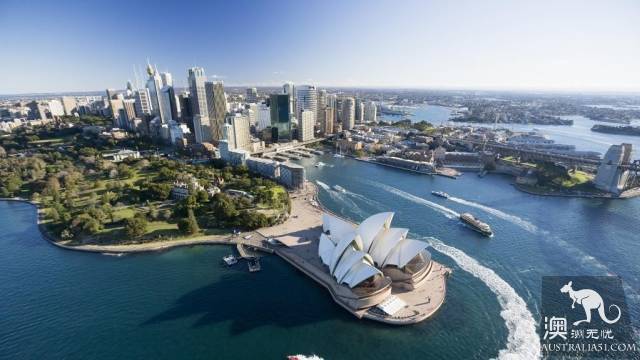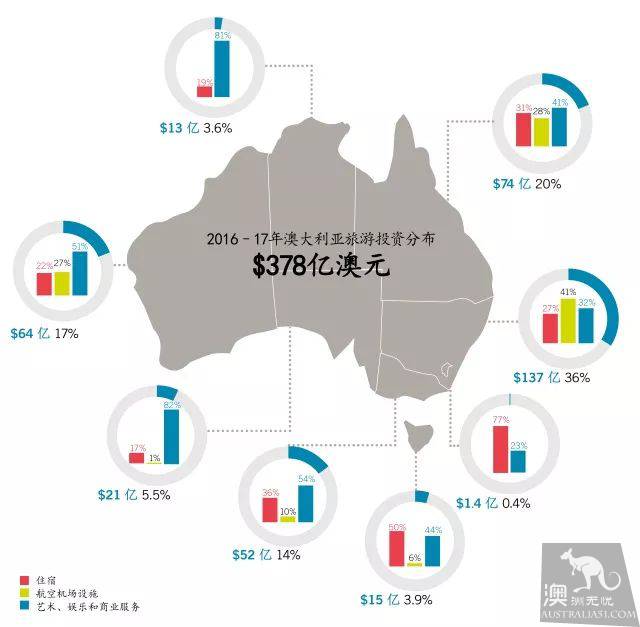Tourism continues to make an important contribution to the Australian economy, providing an attractive environment for investors.

According to (Tourism Investment Monitor 2017, released by the Australian Trade Commission (Austrade) at the end of last year, there were 204 tourism-related investment projects in Australia in 2016 / 17, with a total investment of A $37.8 billion.
Investment in three major areas of Australian tourism has remained strong over the past two years-aviation (A $10.1 billion), arts, leisure and business services (A $17 billion) and accommodation (A $10.8 billion).

Arts, entertainment and business services
Investment in the arts, entertainment and business services category has 83 projects, accounting for the largest investment value. Major sports are mainstreamed, with 35 projects (valued at A $7.6 billion) planned for the development of new sports facilities and upgrading of existing infrastructure.
Aviation infrastructure
There are 19 aviation infrastructure projects worth A $10.1 billion, much of which should be attributed to the proposed Western Sydney Airport (A $5.3 billion), while almost half of all air investment projects go to remote airports. The upgrading of seaports, including the A $1 billion ferry port upgrade project in Tasmania, has become evident as tourists and tourism consumption have increased.
stay
Accommodation remains the focus of tourism investment, especially in capital cities with high occupancy rates. In 2016-17, there were 102 new residential investment projects worth A $10.8 billion, which could add 19730 rooms. During the period, 18 accommodation projects were completed and opened, with an increase of 2650 rooms. In addition, 90 non-tourism-related comprehensive projects under construction also include accommodation projects, which can add 19910 short-term accommodation rooms. The total number of rooms under construction amounts to 39640.
Due to the increase in demand, the supply of guest rooms has increased by a large margin. Since 2010, about 23000 guest rooms have entered the capital city market, according to research by (Colliers). The average occupancy rate in Sydney, Melbourne and Hobart was more than 80 percent. In 2016, Sydney and Melbourne were 89 percent and 87.6 percent, respectively, and this year they are expected to be 89.2 percent and 87 percent, respectively.
Strong growth in tourism
The China-Australia government signed an air service agreement with a record number of direct flights from China, according to the Tourism Investment Monitoring report. With the streamlining of the visa process for Chinese tourists, the number of visitors is expected to continue to grow at a high rate over the next few years.
Strong demand from expected international tourists is driving the industry's future investment prospects. Tourism spending in Australia will continue to grow by 6.3 percent a year to A $224.8 billion in 2026-27, according to the Australian Tourism Research Department's Tourism Forecasts,TRA 2017 forecast. Therefore, significant investment in Australian tourism will be an important direction in the future to ensure that supply keeps pace with demand growth and meets growing consumer expectations.

"in terms of the distribution of investment in the states, the new state is still the hottest destination for tourism, followed by Kunzhou and Victoria."
Australia's average annual foreign direct investment (FDI) reached nearly A $50 billion between 2007 and 2016, with more than 50 percent of mining investment accounting for more than 50 percent and about 75 percent of the peak between 2011 and 2014, the Australian Trade Commission said, citing data from 2007 to 2016.
But last year, Australia's FDI soared to an all-time high of nearly A $65 billion, and more than half actually went into non-mining, where non-mining investment reached its highest level since 2007 in 2016. This indicates a shift in investor interest in Australian assets, and tourism investment is increasingly popular with foreign investors.